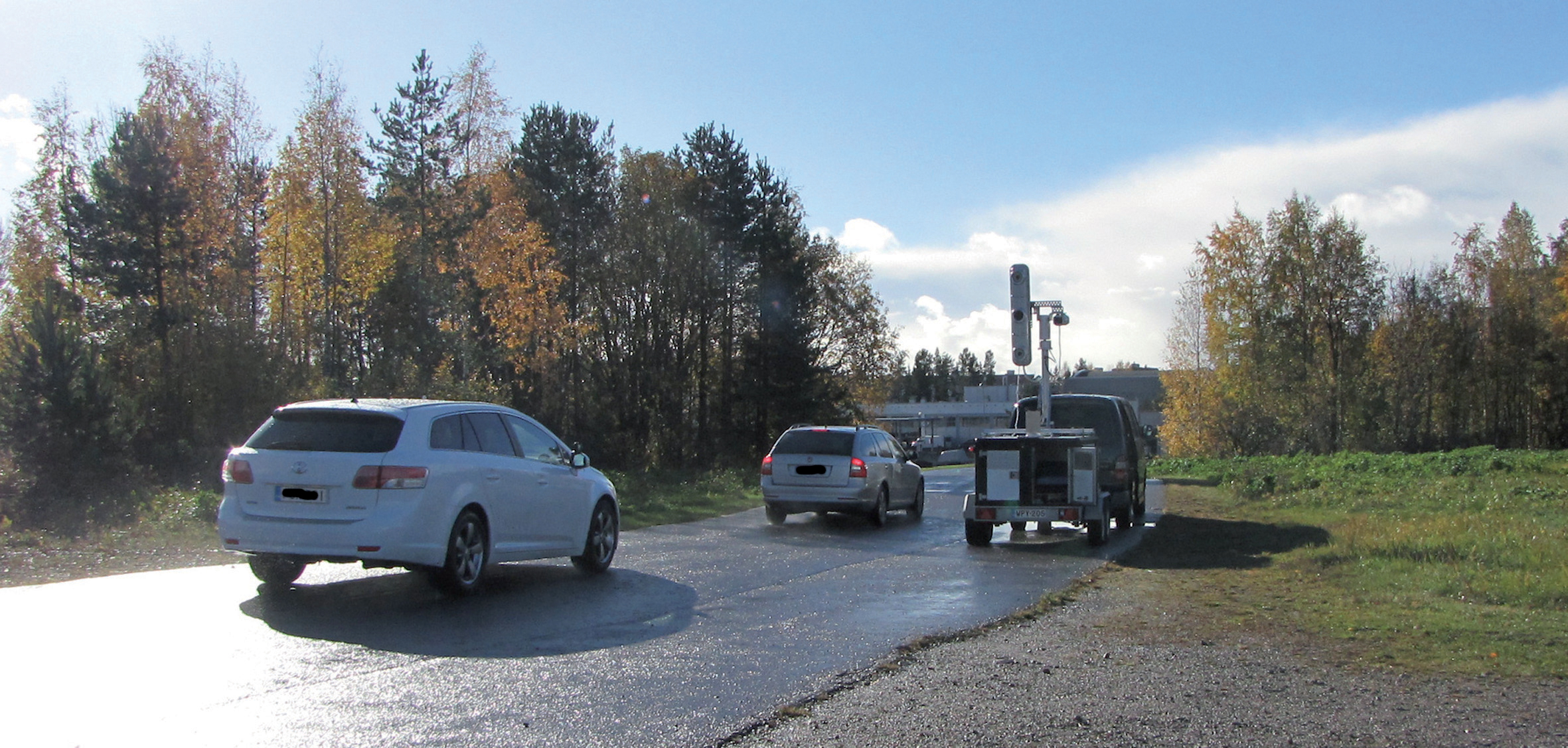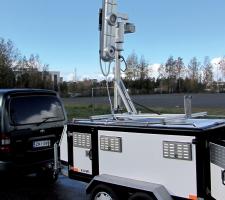
Finland's VTT is developing a mobile, automated seatbelt compliance system. Here, the organisation's Matti Kutila discusses progress
In Finland, as a part of the"In road safety terms seatbelt compliance is, after reducing alcohol-related driving offences, addressing speeding and the rollout of eCall, the next major EC priority. The development of a technological solution to address the problem also ties in with another EC target: to increase automated surveillance and enforcement which helps police forces to focus their efforts on more serious offences.
"Stretching back to 2007, a lot of work was done with the police here in Finland, as potential end users, to help define the system requirements. Finland is a large country with many miles of roads in sparsely populated areas. There are also typically many choices of route. That makes enforcement difficult - the most important message coming back from the police was that fixed enforcement would be of little value, as once enforcement systems' locations became known they would be avoided by motorists. The police want to monitor traffic and impose penalties for violations more comprehensively and fairly, therefore a mobile system makes much better sense.
"Other stated requirements include a fast set-up time - no more than 15 minutes - and the ability to take the system on everyday patrols and operate from preselected sites. The police force here in Finland, as in many other countries at present, faces funding and manpower constraints so it is very keen to see technology bolster its enforcement capabilities wherever possible." The system is based on automatic camera surveillance and wireless connectivity. Monitoring information is gathered into a common database available to the police, road operators and environmental authorities; Kutila notes the significance of the participation in the consortium of Finnish service operator Emtele Ltd, which took care of service delivery as well as the database.
The aim is to develop the test equipment to match police requirements as closely as possible. The database is protected by firewalls and other technical solutions and the system automatically destroys images over one month old and those in which no traffic violation is evident. Moreover, special attention has been paid to the security of data against hacking and ensuring that (for example) environmental authorities do not have access to licence plate information, as this would be against privacy legislation.
The camera system, from Italian firm
"The KRIA system's capabilities allow us to explore many different applications and its integration into a mobile setting was much easier than we expected, although KRIA had to adapt its system to deal with Finnish number plates." he continues. "A much more complex issue from the VTT's perspective was development of the middleware algorithm to allow data fusion for licence plate recognition as well as the various enforcement applications being pursued." Construction of the new system started in the summer of this year and closed-area testing started on 10 August. In terms of determination of seatbelt compliance, accuracies of 60-70 per cent are currently being achieved; Kutila notes that the police are requesting a much greater accuracy from any production system.
"The prototype for on-road testing is still being finalised," he says. "The six months of operations in the real world will help a lot in developing the system to achieve greater accuracies." Once trials are completed, the VTT anticipates, the surveillance technology used will be transferred from the test to police vehicles. The technology transfer will start gradually. The first patrol products, such as the adapted speeding detection, are expected to be commercialised in 2011. However, the technology for seatbelt compliance detection still needs more work and therefore full commercialisation is not expected before 2013.
Vision based enforcement
KRIA's portfolio of
vision-based enforcement systems works on the principle of comparison of
the images captured by high-frame rate, high-definition digital
cameras. Vehicles' movements and speeds are thus determined through
analysis of how far they have moved from one frame capture to the
next.
KRIA claims very high levels of accuracy for its systems. For
instance, the company states that its T-ID automatic license plate
reading system, which is certified by the Italian Ministry of
Transportation, achieves a 100 per cent recognition rate with vehicle
speeds of up to 250km/h (155mph), at a plate angle of up to 30o, in any
light and weather conditions. The company also offers the T-RED red
light monitoring system, and T-EXSPEED which can measure instantaneous
and average speed at up to 300km/h (185mph). The latest T-EXSPEED V2.0
combines speed, red light and trajectory-based violation enforcement in
one unit. Being vision-based, all offer the significant installation and
operating advantages of being able to operate without external triggers
(whether inductive loop, radar or laser).
The EC's targets for the reduction of road casualty figures drive much of the research going on within the Advanced Safety and driver Support for Essential road Transport (ASSET-Road) project, which is coordinated by PTV AG. Co-funded (to a total of just over E14 million) under the EC's Seventh Framework Programme for Research (FP7), ASSET-Road started in July 2008 and will finish at the end of December next year. In total, organisations from 10 EU Member States are a part of the ASSET consortium, which has some 19 partners in total and also includes non-EU contribution from Tanzania and India.
ASSET-Road actually combines several distinct pieces of research, the collective aim of which is to create an advanced sensor and processing network which will provide assistance and information to both infrastructure operators and road users. Moreover, it aims to improve traffic safety and reduce accidents caused by traffic violations. It has four test sites, in Germany, Austria/Germany, France and Finland.
ASSET-Road's German test site is developing an integrated safety station. Upstream of the roadside station are pre-selection and sorting points which feature high-speed/slow-motion Weigh-In-Motion (WIM) (new, high-precision scales will be capable of giving total vehicle weight, per-axle weight and vehicle classification) as well as pavement-embedded RFID reading equipment and an infrared camera capable of providing temperature/failure information on vehicles' brakes, tyres and bearings. Vehicle movements are tracked using video and a high-resolution 3D camera will carry out a more precise identification including number plate reading and vehicle height/distance measurement as well as giving speed information.
The Austria/Germany test site is engaged in the development of ROC Systemtechnik GmbH high-precision WIM sensors whose operating principle is based on the measurement of shearing forces. Sensors will be optimised using finite element analysis and then pre-tested.
In France, ASSET will explore a variety of V2X and GNSS-based safety applications. The basis for these is TransportML, a platform intended to share information for such local services as winter maintenance, road works, public transport, waste collection and emergency response. At the roadside, a server system will handle applications and the data needed to address vehicles' requests. In-vehicle, applications are installed in embedded computers.












